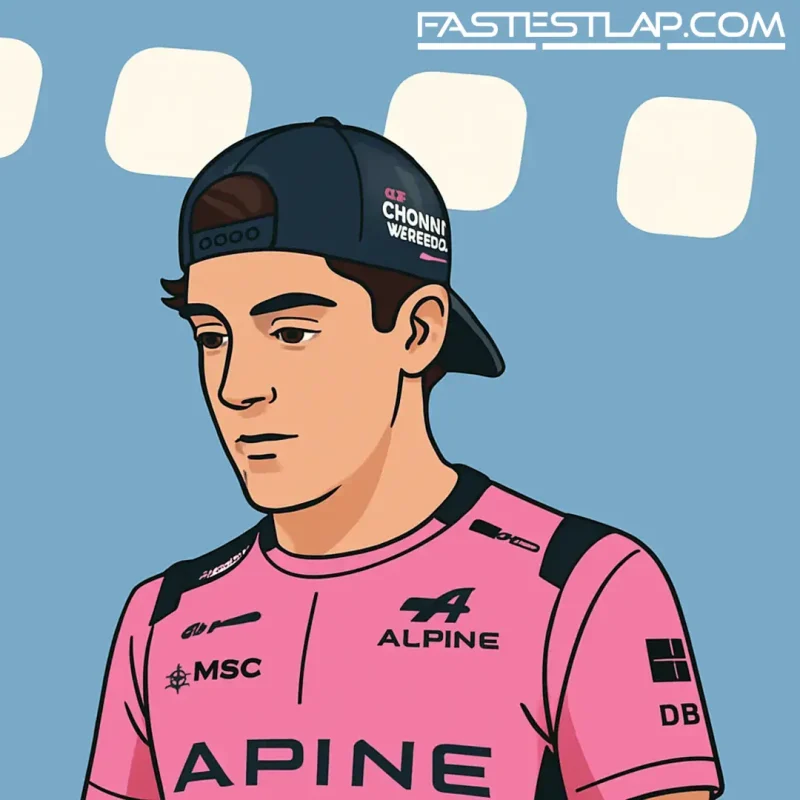Alpine keeps Colapinto in the 2026 conversation as rookie steadies his hands
Alpine hasn’t closed the door on Franco Colapinto. In fact, it’s ajar enough to be interesting. Team managing director Steve Nielsen says the 22-year-old Argentine remains under active consideration for a 2026 seat, with the team intent on letting a few more races play out before they lock anything in.
It’s a timely lift for Colapinto, who’s had to learn fast under pressure. After a bright cameo with Williams late in 2024, he switched to Alpine during the European leg of 2025 — another mid-season parachute job after the team parted ways with Jack Doohan — and found a much tougher car to wrangle and far less margin to impress.
“It’s difficult for any of the new drivers coming in,” Nielsen said when asked about Colapinto’s form. “Franco had a difficult start. I think we’ve seen that equalise and calm down a little bit. He’s now had the measure of Pierre in the last two or three races, so he’s on a par with him, which is good. We hope it continues, and then we’ll make our decision on Franco and whoever else is in the frame when we have to, but we’re a few races away from that yet.”
Strip away the corporate caution and there’s a clear message: Alpine sees progress. And that matters, because Colapinto’s results column hasn’t been kind. In 2024, his Williams stint produced points in Azerbaijan and the United States before reliability snuffed out momentum. This year, he’s at least seen the flag every Sunday he’s started, with a best of 13th in Monaco and Canada — industrious drives that didn’t quite bite.
Context counts. Alpine’s 2025 package hasn’t been a headline act and the midfield is unforgiving. The car’s been happier in race trim than over a lap, which makes life hard for a rookie trying to qualify his way into relevance. Colapinto’s cut down the unforced errors that dogged his early weekends and the internal delta to Pierre Gasly has narrowed — the sort of trend engineers notice even if the TV graphics don’t.
He’s also navigating a savvy driver market. With the 2026 regulations looming and several teams already sketching out their future line-ups, open seats are evaporating. Alpine, though, is in that familiar balancing act: track the rookie’s trajectory, measure it against external options, and factor in what a rules reset might do for the car’s competitiveness and the kind of driver profile they want leading the next cycle.
On that front, Colapinto ticks a few boxes. He adapts quickly, generally races clean, and brings a growing fanbase from Argentina — not a bad market to have on your side when a manufacturer needs momentum. More importantly, the engineers feel he’s coachable. Alpine’s been open about the need to build a longer-term spine after a turbulent stretch; continuity with upside is suddenly valuable.
The ask from here is simple and brutal: qualify the car a row higher, put Gasly under pressure on Saturdays, and nick a point or two before the flyaways. If the team’s internal numbers continue to show the curve bending the right way, that 2026 door stays open. If it stalls, Alpine won’t blink at looking elsewhere. They can’t afford to.
There’s also the calendar. Nielsen’s “few races away” line hints at a decision coming late enough to be fair, but early enough to avoid being left holding the driver-market bag. No one at Enstone wants a repeat of offseason uncertainty; they’ll want clarity well before the final sprint.
For Colapinto, this is the job: keep the head down, keep finding tenths, and make the choice awkward. He’s only 20 grands prix into his F1 career, and it shows at times, but lately it’s also shown why teams took the punt in the first place. If Alpine’s 2025 car hasn’t let him broadcast it on the scoreboard, the people who matter are still listening.




